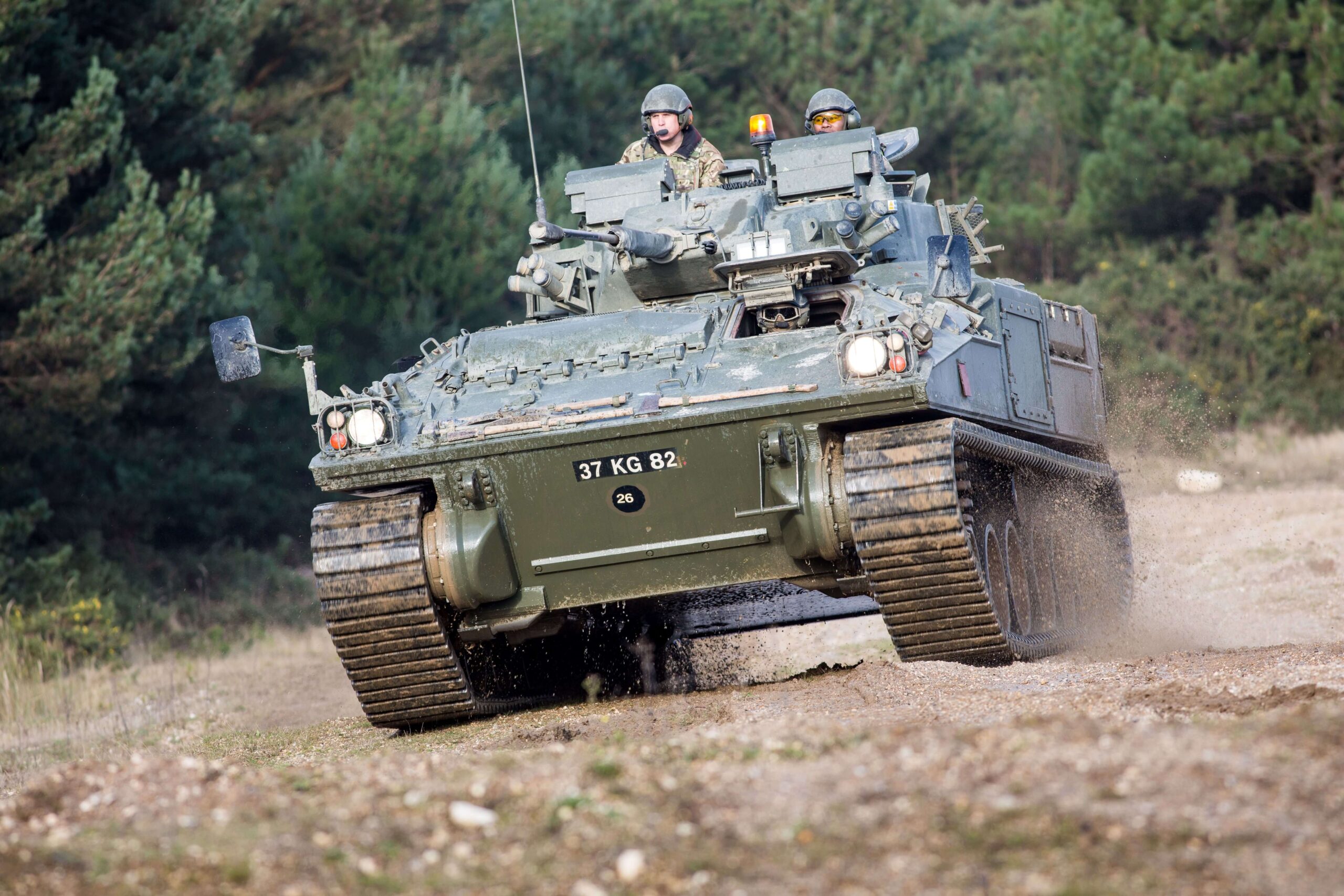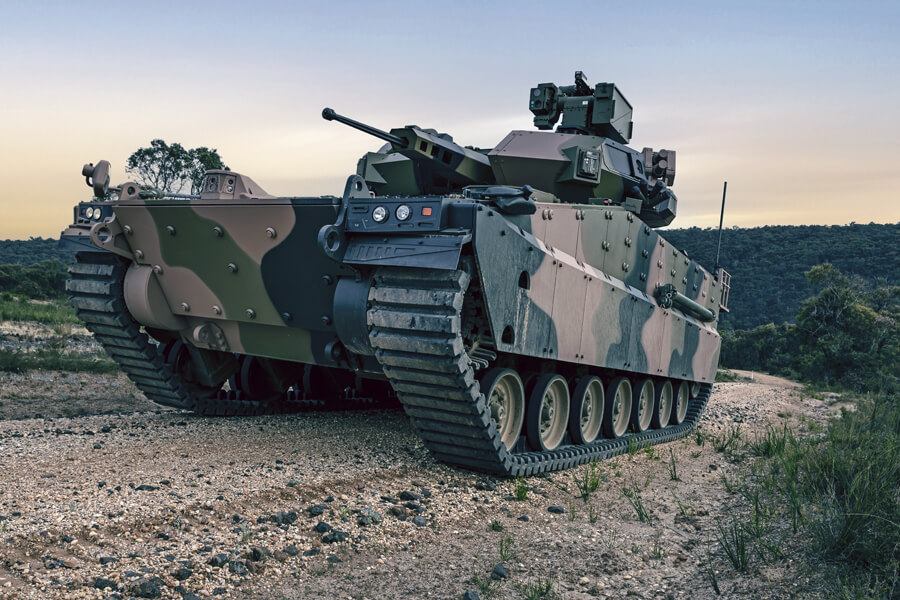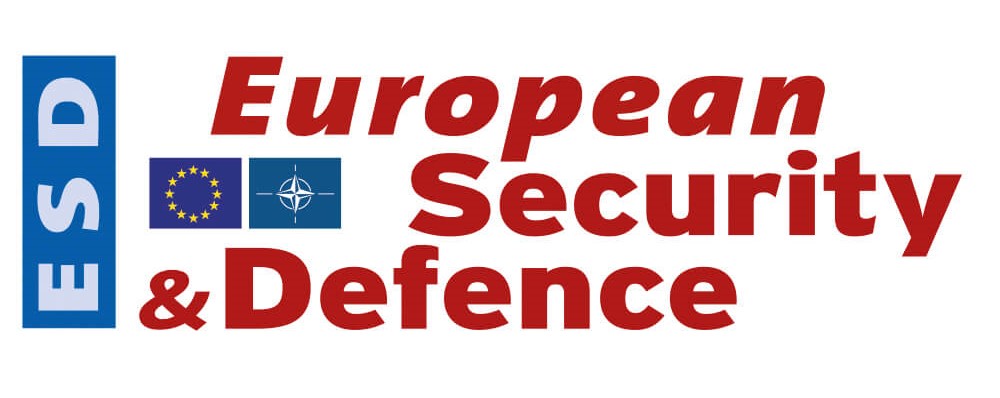Article by Curtis Hand
Through Life Capability Management is a comprehensive approach to ensure the longevity, performance, and cost-effectiveness of defence materiel…with some surprising innovations.
Predating the birth of today’s MBT commanders, the UK MoD pioneered a form of smart acquisition that considered many price and cost factors, from design and specifications to maintenance regimens and material durability. This includes examining other factors that have consequential cost effects based on choices made in this process. This became known as Through Life Capability Management (TLCM), and it remains a formidable way to manage materiel, maintain capabilities while reducing – or at least holding down – total costs of ownership (TCO).
Situation
Armoured tracked vehicles (ATV) have a significant TLCM challenge comprised by several factors that are related to TCO and, simply, choices made at the ATV’s design stage. ATVs – particularly those equipped with steel tracks – historically have maintenance and operational sustainability challenges
While ATV steel tracks are durable – and seem to be cost-effective at first glance, they are imbued with several expensive ills:
- Many other associated parts that wear-out quickly
- Spare part logistical reliability
- Labor-intensive maintenance
- Sizable time amounts that ATVs are out of service
- Damage to on-camp roads and civilian streets
- Extreme vibration causing damage to crew health, ordnance, and electronic systems inside
- Increased vehicle weight that slows its movement and increases fuel consumption
… and all these factors represent direct and indirect costs a military must account for and shoulder, significantly increasing TCO for an ATV fleet to maintain its readiness.
Solution
Surveying ATVs as an ecosystem from the ground upward, using TLCM principles, it was possible to determine that steel treads were at the foundation of their overall TCO problems.
This created opportunities for the few companies with a specific expertise with rubber and other man-made materials. For example, Soucy developed Composite Rubber Tracks (CRT) as a single, simple innovation that remedies all of the steel trad ills.
Soucy introduced an innovative material design that fulfils the critical conditions of TLCM by utilising fewer components, requiring minimal maintenance, and reducing costs over time.
Operational and Tactical Implications
As “capability management” is at the heart of TLCM it bears examining how the introduction and adoptions of CRTs facilitate this aspect or TLCM before reviewing obvious benefits
Task Redundancy
The reduced maintenance requirements of CRT have a direct impact on the allocation of human resources: Less time on maintenance allows personnel to focus on other mission critical duties.
This is crucial in autonomous or semi-autonomous platform operations whereby the small crew ‘s time is limited, so tasks require efficient execution.
Data Corroboration
Numerous user trials and data from military exercises corroborated Soucy’s own findings concerning substantial reductions in vibration, weight, and fuel consumption. Empirical evidence was essential in establishing the credibility and reliability of CRT in diverse operational environments, proving CRT efficacy is not solely based on manufacturer claims.

Strategic Logistics
CRT efficiencies include strategic logistics. A reduction in spare parts requirements converts to decreased reliance on easily disrupted intermodal transport for deliveries. This streamlines and secures logistical processes, ensuring a smoother flow of materials / equipment to and from the operational theatres.
Benefits
The adoption / adaption of CRT brings numerable key benefits to TLCM planning and acquisition:
Reduced Noise and Vibration
Decreasing crew and component fatigue is an exceptional CRT benefit with a remarkable 70% reduction in vibration, providing more than a smoother and quieter ride. This has profound implications for the longevity of sensitive components and munitions as CRTs enhance an ATV’S stealth capabilities, crucial for success in modern warfare.
Enhanced Durability and Fuel Economy
The CRT track system’s greater durability means ATVs have extended operational periods before requiring maintenance. CRT’s inherent lighter weight contributes to improved fuel efficiency, optimising operational costs and ensuring sustained missions.
Operational Flexibility
CRT’s lightweight construction also plays a pivotal role in operational flexibility – significant in MOUT operations, whereby manoeuvrability is paramount to achieve success. For example, improved braking and turning capabilities of CRTs provide an ATV with a decisive edge in navigating difficult terrain and increasing tactical effectiveness.
Logistic Costs
Fundamentally, CRT emerged as a cost-effective solution because of reduced parts and maintenance requirements. The saved financial resources are able to reach other critical areas that enhance overall force availability and capability. One could argue that with reduced logistics activities, there is a reduced carbon emissions footprint to be realised.
Increased Resilience
Because of the material strength and track configuration, CRTs provide increased resistance to mine and IED strikes. This is vital as in past operations we have seen a proliferation of sophisticated unconventional explosive devices exploiting any available military ordinance.
Changing Perspectives
Despite CRTs advantages, doctrinal adoption necessitates a mindset change – it is still classified as a “Level 2” task. Benefits far outweigh challenges associated with this transition.
The ability to last circa 5000 km without maintenance is a noteworthy and unique benefit of CRTs. This characteristic facilitates repair and operational planning predictability. It is this predictability that is essential for combat effectiveness assessing, accurate supply planning, and accurately aiding in devising comprehensive strategies for mission success.
Acquire & Sustain
The Australian LAND 400 Phase 3 IFV acquisition was structured to deliver a winning solution based on an extensive testing and evaluation regimen, with the selection and fielding process based on a firm timetable. From four contenders Australia down-selected two competitors for the final phase of the selection process in September 2019: Hanwha Defense Australia (AS21 Redback) and Rheinmetall Defence Australia (KF41 Lynx). Final trials and evaluations during the next three years included Australia’s army operational environments as part of a risk mitigation activity.
By July 2023 the Redback won the programme; and in December 2023, the acquisition contract was signed. One major plus of the Redback was that it used CRT, whereas its competition was equipped with conventional steel track.

The capabilities of CRT for armoured vehicles have advanced substantially in recent years, moving up the armoured vehicle scale from M113 class vehicles, to CV90 IFVs to the more than 45-tonne weight of the Redback, with further developments to accommodate heavier armoured vehicles in prospect.
Evaluating the choice between a CRT solution for an armoured vehicles, versus conventional steel track through a TLCM lens indicates that CRT has distinct advantages over conventional track across the service life of the vehicle. These advantages are both operational and economical, based on real world data.
Future Prospects
The armoured vehicle sector continues to experience paradigm shifts. The introduction CRT, such as those from Soucy, is (literally and figuratively) ground-breaking technology, offering many benefits across manned and unmanned defensive platforms, the least of which is benefitting from TLCM principles.
Simply adopting CRTs as a technical material innovation is a strategic TLCM enabler for ATV platforms. As evidenced, CRT’s manifold cost benefits are surpassed by CRTs as a catalyst for improving military mobility, longevity, durability, and capability.
As armed forces continue to evolve out of necessity, it is necessary to embrace new technologies with more than one benefit. In the ATV case, CRTs become imperative for ensuring armoured platforms are as formidable on the battlefield as they are financially and logistically sustainable throughout their (now extended) operational life.
Our Media partner

European Security & Defence (ESD) is the present and future of NATO-European reliable information and thought leadership.
Employing Knowledge-Based Influence (KBI), this specialist international security and defence title from Mittler Report (Bonn, Germany) offers its demographic a trusted, integrated media resource via digital, online, and print channels, supported by business-level social media.
ESD’s online daily news and 11 digital-print magazine editions (annually) provide exclusive and original content.
Authoritative articles and expert KBI from ESD inform and shape the opinions and understanding of defence-industrial complex decision-makers and government policymakers. This demographic includes budget allocators, industrial partners, programme overseers, and specifiers, all beneficiaries of ESD’s offering as the largest and most influential defence and security media platform in Europe. ESD: INTELLIGENCE FOR THE INTELLIGENT™
Contact the editorial or commercial team via www.euro-sd.com